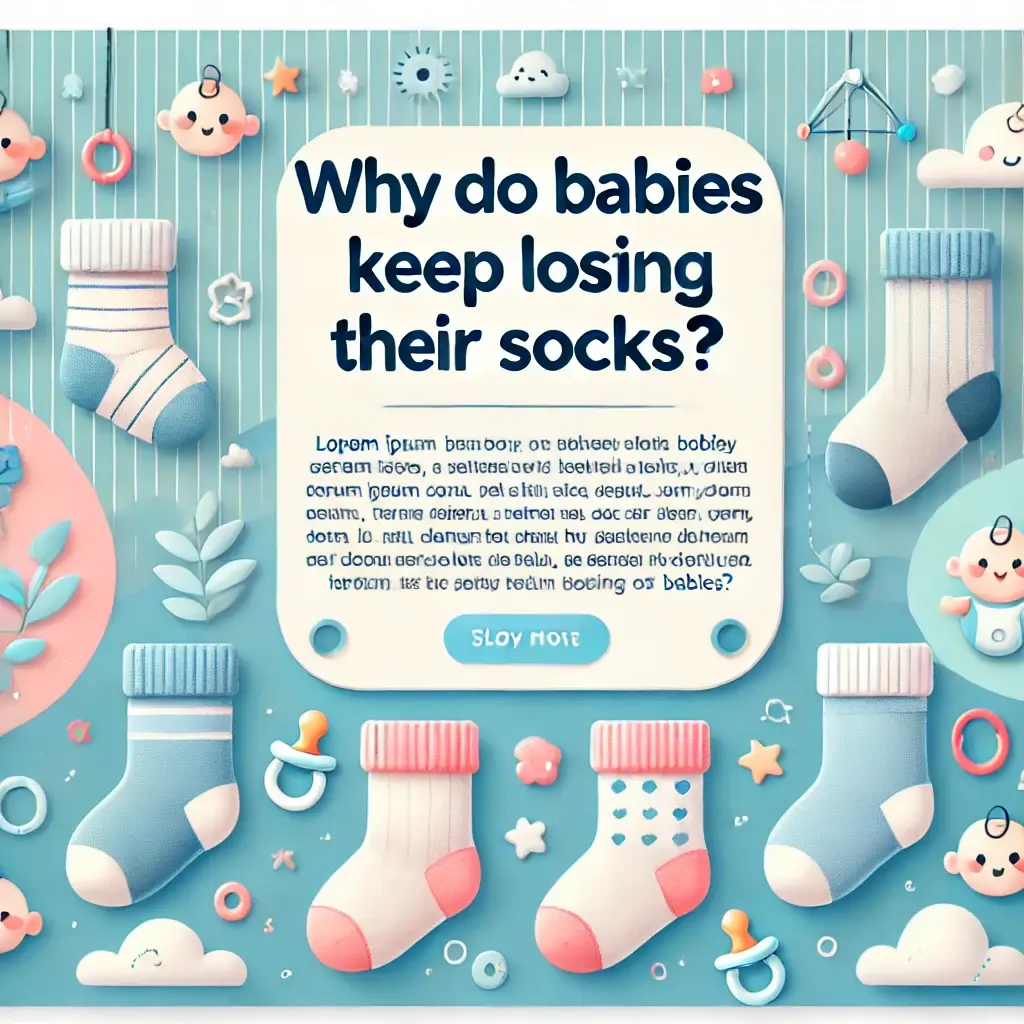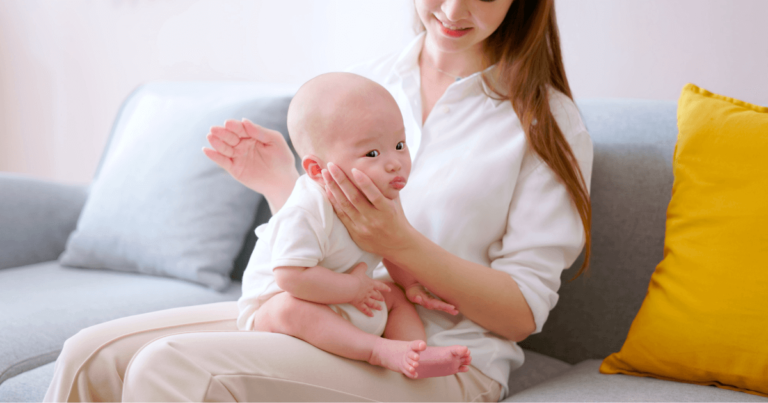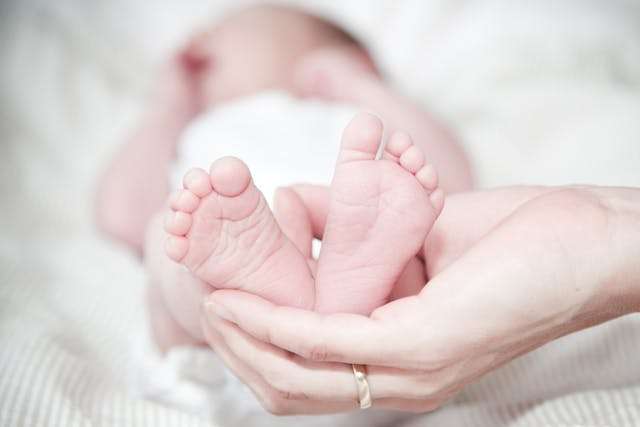Why Do Babies Keep Losing Their Socks? 2025 Guide

Why do babies keep losing their socks? It a common question by many new parents. Worry not, am going to address it in this article in details.
Before we jump into solutions, it helps to understand why socks won’t stay on. Babies move a lot! Their feet are constantly kicking, and socks tend to slip off easily. This is especially true for babies who are very active or those just starting to discover their toes.
Socks may also come off because of improper sizing or fabric choices. Loose socks fall off, while tight ones may irritate your baby’s skin, causing them to kick them off. The good news is that with a few adjustments, you can keep those adorable socks where they belong!
How to Keep Socks on Your Baby: Solutions
- Invest in High-Quality, Well-Fitted Socks
One of the biggest mistakes parents make is buying socks that are either too big or too small. When socks are too loose, they’re much more likely to fall off, especially if your baby is active. On the other hand, socks that are too tight can irritate your baby’s feet and lead to constant fussing.
What to Look For:
- Snug but not tight: Look for socks with a good amount of elasticity that gently hug your baby’s feet.
- Elastic cuffs: These can help keep socks from slipping down without leaving marks on your baby’s delicate skin.
- Soft fabrics: Choose cotton or cotton-blend socks, which are breathable and flexible, ensuring both comfort and durability.
Professional Tip:
If you’re unsure about sizing, opt for socks that come in multiple sizes (e.g., 0-3 months, 3-6 months) and choose the one that corresponds with your baby’s foot length. You can measure your baby’s feet with a simple ruler or take them to a store that offers sock-fitting guides.
- Sock-ons: The Secret Weapon for Sock Retention
One of the most popular solutions parents swear by is Sock-ons, clever little bands that go over your baby’s socks and help keep them in place. They’re soft, stretchy, and designed to grip the sock without digging into your baby’s skin.
How to Use Sock-ons:
- Simply slip them over your baby’s socks after you’ve dressed them.
- Make sure the Sock-ons cover the elastic portion of the sock to prevent slipping.
- These can also work over footed pajamas or leggings for extra security during colder months.
- Footed Sleepers and Pajamas for All-Day Warmth
If you’re struggling to keep socks on, footed pajamas are your best friend. These are great not only for sleep time but also for playtime. They ensure your baby’s feet stay warm, even during active moments, and eliminate the need to constantly adjust or replace socks.
Benefits of Footed Pajamas:
- Full coverage: Keeps your baby warm from head to toe without worrying about socks.
- Easy to put on: Many footed pajamas feature zippers or snaps, making diaper changes a breeze.
- No more sock hunts: You’ll never have to search under the couch or car seat for lost socks again!
- Opt for Gripper Socks as Your Baby Starts to Move
If your baby is learning to crawl, cruise, or walk, you may notice they lose socks even more frequently. Non-slip or gripper socks can help prevent this issue while also providing extra traction as they start to move around on hardwood or tile floors.
Why Gripper Socks Are a Game-Changer:
- Non-slip soles: These socks come with rubber grips or patterns on the bottom, which not only help your baby maintain balance but also prevent socks from twisting or bunching up.
- Perfect for early walkers: As babies begin to walk, gripper socks give them stability and prevent falls, keeping them safe while exploring their world.
- Baby Booties: Stylish and Practical
Baby booties are a fantastic alternative to socks, especially during the colder months. They’re designed to stay on better than traditional socks and come in a variety of styles with adjustable features like elastic bands or Velcro straps.
How to Choose the Right Baby Booties:
- Elastic cuffs or Velcro straps: These help booties stay in place, even for the most active babies.
- Waterproof options: For outdoor use, consider waterproof booties that keep little feet warm and dry in cooler weather.
- Size flexibility: Many booties come with adjustable straps, making them a great long-term investment as your baby grows.
- Layering: The Key to Winter Sock Success
For parents living in colder climates, layering is essential. One easy hack is to layer socks under footed pajamas or baby booties. This ensures that your baby’s feet stay extra warm, and it adds a second layer of protection against slipping.
How to Layer Socks and Booties:
- Start with a thin pair of cotton socks.
- Layer booties or footed pants over the socks for added warmth and security.
- If necessary, use Sock-ons for even more sock retention power.
- Avoid Slippery Surfaces: Keep Socks On Longer
Sometimes, socks fall off simply because your baby is moving on a slick surface. When your baby is crawling or learning to walk, avoid placing them on smooth floors like hardwood, laminate, or tiles while they’re wearing socks. Grippy mats or baby socks with non-slip bottoms can make a world of difference.
- Try Wool Socks for Extra Warmth and Grip
If your baby’s socks keep slipping, it might be worth trying wool socks. Wool has natural moisture-wicking properties that keep feet dry and warm, and wool socks often have better grip and elasticity compared to cotton. This can be especially helpful during the winter months when you want to ensure your baby’s feet stay toasty.
- The Sockless Approach: A Pediatrician-Backed Option
Interestingly, many pediatricians recommend letting your baby go sock-free when they’re indoors. Being barefoot allows babies to use their toes to grip surfaces, which helps with their balance and coordination as they start to stand and walk. If the room is warm enough, consider letting your baby go barefoot for a while—it can aid in their development and reduce the stress of constantly chasing down lost socks.
Expert Advice on Baby Sock Safety
Pediatricians also advise against using socks that are too tight or have heavy elastics, as these can cut off circulation. Always check your baby’s feet after wearing socks to ensure there are no red marks or signs of discomfort.
Final Thoughts: Why Do Babies Keep Losing Their Socks?
Parenting is full of small challenges like keeping socks on your baby, but remember, you’re not alone in this journey. Many parents face the same frustrations, and with these tips and solutions, you’ll find what works best for you and your little one. Whether it’s sock-ons, booties, or even footed pajamas, there are plenty of options to keep those tiny feet warm and cozy.
Most importantly, give yourself some grace—losing a sock or two along the way is completely normal, and you’re doing an amazing job. Keep up the great work, and know that each small victory, like keeping a sock on, is a win!
Related Articles
Cuban Names
Last Names From the 1800s
How to Store Baby Clothes
How to Keep Your Baby from Chewing on the Crib
How to Bathe a Baby When Traveling






